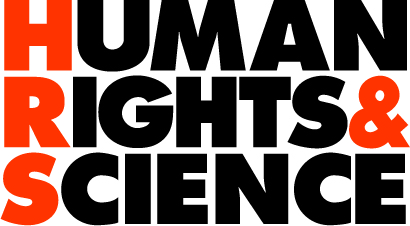Partnerships for Development
The HR&S Four Networks
Researchers, laboratory technicians, entrepreneurs &
development stakeholders
Network’s Team-leaders
Stakeholder committee
From Network of Researchers
- Amidou TALL, Burkina Faso.
- Geofrey MALABA, Kenya
- Sylvia MUTALE, Zambia, also Branch member
From Network of Technicians
- Mr Atwine Ambrose, Uganda
- Mr Karim YANKINE, Burkina Faso
Committment
- Two work hours per week.
- Manage five institutions according to our HubSpot programme.
- Respond in our WhatsApp chat group.
- Attend Branch&NetTalks, monthly and on-line.

Ambition
The overall ambition is to contribute to the economic, social and human international development by improving the skills and competences of individuals in different areas, in particular those linked to research, innovations and enterprising for social good. We target international equal partnership for development.
Specific ambitions include, but are not limited to:
- Increase the internationalisation of research and innovation in sub-Sahara African countries.
- Promote mobility opportunities for researchers and technicians.
- Increase entrepreneurship for social good.
- Increase the level of employment.
- Financial viability for the HR&S Four Networks.
Outcome Challenges
- Aid mind-set
- The aid industry has created a false understanding that donations, free services and free products and abundantly available for ever. This tend to include logistics, workshops, equipment, service and maintenance, workshops and researcher exchange. We have come to a situation where many stakeholders expect “to be served”. As a consequence,
- institutions are reluctant to pay for services and
- stakeholders are reluctant to contribute with effort and activities.
- The aid industry has created a false understanding that donations, free services and free products and abundantly available for ever. This tend to include logistics, workshops, equipment, service and maintenance, workshops and researcher exchange. We have come to a situation where many stakeholders expect “to be served”. As a consequence,
- Sustainable economy
Activities
Activities include but are not limited to:
- Offer coaching on network management strategies, benefiting form ROPE.
- Institutional capacity and sustainable economy
- Offer workshops on specific aspects of scientific institutional capacity such as
- the scientific method, seeking research grants, publishing scientific papers, service and maintenance of scientific equipment
- Support exchange opportunities.
- Ensure sustainable economy for the Four HR&S Networks.
- we depend on financial viability to be truly efficient. So that we can reach significant sustainable impact, with the little amount of time that we have available. Please let us ensure our own good finances, outside the donor driven aid sector, which is and will always be, too volatile to depend on. We need a good value proposition including, but not limited to,
- conferences / seminars
- workshops
- researcher and technician exchange visit programmes.
- we depend on financial viability to be truly efficient. So that we can reach significant sustainable impact, with the little amount of time that we have available. Please let us ensure our own good finances, outside the donor driven aid sector, which is and will always be, too volatile to depend on. We need a good value proposition including, but not limited to,
Milestones
- Reaching out to development institutions, development banks and companies to identify overlaps between our networks and their missions. Then create win-win pitches and approach the potential partners. (Cecilia & Amidou)
- Arrange workshops
- Arrange conferences
- Reach out to Comstech. Identify door-opener, develop a pitch, reach out (Amidou & Cecilia)
SOP
22RISE
- We reach out to development institutions, development banks and private companies to identify overlaps between our networks and their missions. Then create win-win pitches and approach the potential partners. Follow-up and ensure good partner care.
- If we use HubSpot as CRM
- Upload companies/institutions that may be interesting to partner with.
- Structure the company section with extra columns
- Average scores (The average score of the other four parameters), Investment capacity (does the other institution have capacity to invest financially), Mission overlap (How well does our mission overlap with the other institution’s mission?), We have a suitable proposal (We have a proposal suitable for addressing the other institution’s challenges). Then score all these from 1-10.
- Door-opening partners. (This gives direction to partners’ door-openers, thus name of person who knows who to contact or even better can introduce us and/or our pitch).If using HubSpot as CRM to prioritise among potential partners.
- Each stakeholder committee member selects 5-10 institutions to compile data for. We fill the columns created per company/institution, as well as compile important information from the company/institution website and LinkedIn, including key persons (and from their LinkedIn).
- Develop a win-win pitch and reach out.
- Follow-up until deal has been made or not made. If not compile lessons learned and take informed decisions.
- Outcome challenges include t that only paid for versions allow team views, we are thus restricted due to the limitations of the free versions of HubSpot.
Cecilia was thinking that “maybe I can pay from my salary but unfortunately found that it is expensive to move to the next level”. We need professional or enterprise to do what we wanted to so. We will have to find a solution but until we do, we will create columns on our own screens according to the SOPs and take screenshots and share and then everyone can copy to their own. As soon as we can generate an income for the networks I propose this to be a priority cost, as it has potential to generate more income. Let us add this matter as an activity. (We may want to google “screenshot” to find the instructions valid for your computer.)
- Partner care stewardship
- Communication
- Transparency and accountability
- Inform about progress
Measure impact real-time
Financial viability
- Value proposition
- Conferences
- Workshops
- Visits
